The best folk remedies for the Colorado potato beetle

Many believe that the Colorado potato beetle can be exterminated once and for all with chemicals. This is not so - if a pest has wound up on the site, then it can take more than a year to fight it. Insects quickly adapt to changing external factors and develop resistance to purchased drugs. That is why it is necessary to use the "surprise effect", alternating between different methods of exterminating the pest.
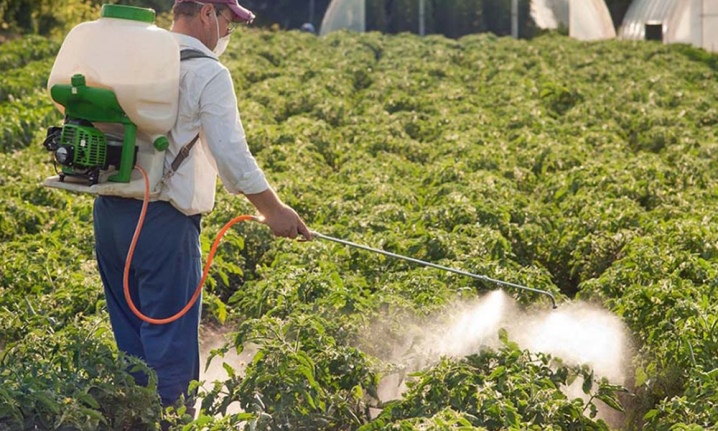
Review of "dry" methods of control
Unfortunately, scientists have not yet been able to develop a potato variety that is absolutely resistant to attacks by the Colorado potato beetle. Gardeners annually spend a lot of effort, money and time to fight this enemy. The colony of the Colorado potato beetle is able to survive even with the onset of cold weather - individuals are buried in the ground, and with the first spring heat, the base is activated. These insects can fly to the garden of neighboring areas, so it is impossible to protect the plantings 100% from the attacks of the pest.
One female can lay up to 1000 eggs at a time, while the larvae actively feed on potato shoots.
If you do not destroy the enemy and let the situation take its course, then the colony is capable of completely destroying the aboveground part of the plants in a few days.
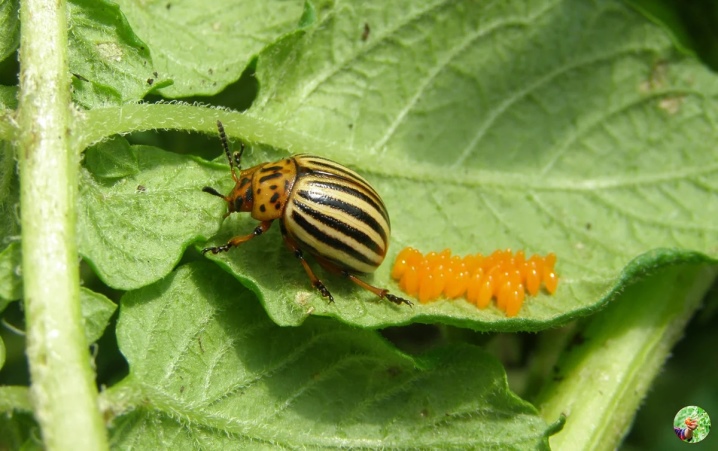
On an industrial scale, the beetle is usually destroyed using chemicals. However, if you poison a beetle, then the tubers will accumulate poisons, which then, along with food, enter the human body. Therefore, the owners of individual farms are trying to use more sparing folk remedies.
In private households, the so-called "dry treatments" have become widespread. In this case, the soil between the rows and young shoots are sprinkled with powders that are safe for humans. Usually, dusting is carried out early in the morning, while dew drops remain on the leaf. It is recommended to repeat the treatment every two weeks from the moment the first shoots appear to the formation of buds; at the end of flowering, another single pollination is carried out. For processing, you can use different dry substances, among the most effective are ash, corn flour, cement and gypsum.
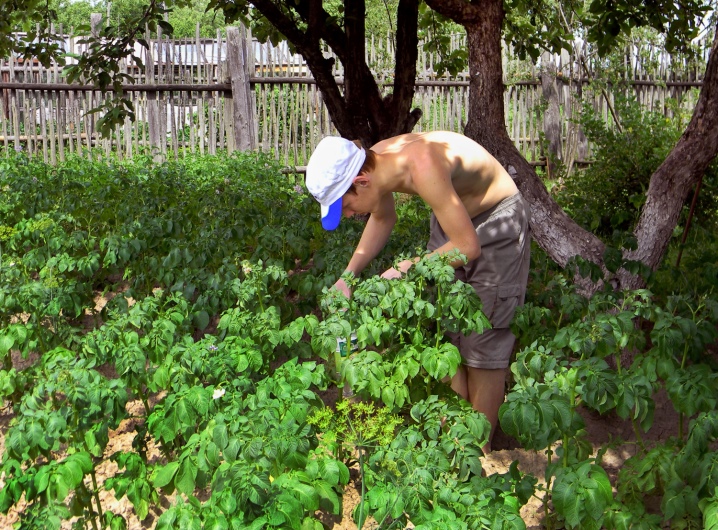
Dusting with ash
Ash crushed to the state of ash, especially obtained from birch wood, inhibits the development of larvae and scares off an adult pest. For each square meter of the planting area, 1 kg of dry powder is taken - the wet leaves are dusted with a thin layer and evenly distributed over the soil surface near the bushes and in the aisles.
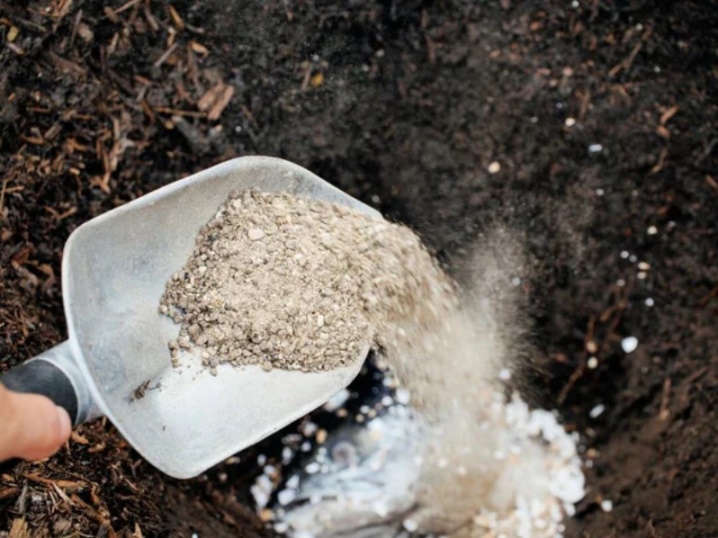
Processing with corn flour
Cornmeal attracts the Colorado potato beetle with its taste and smell. He eats it with great pleasure, but in the stomach of the insect the composition quickly swells and causes death. Corn starch has a similar effect.
An important condition for processing in this case is the presence of liquid on the surface of the leaf plates, therefore, spraying is performed early in the morning or after preliminary spraying with water.
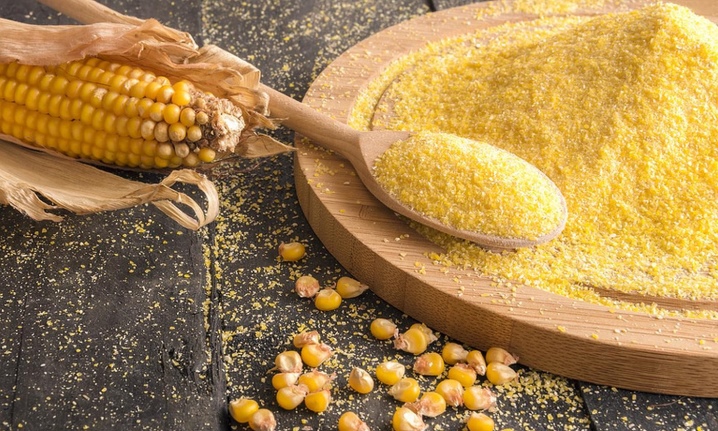
Pollination with cement or plaster
You can destroy pests with gypsum or cement, they work in the same way as corn flour. but when working with this agent, you need to be careful, because when wet, the powder can harden and block the cellular respiration of a young plant. Therefore, the treatment must be carried out in the daytime, the plant must be dry.
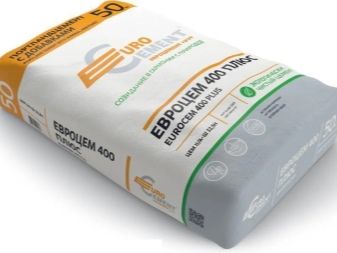
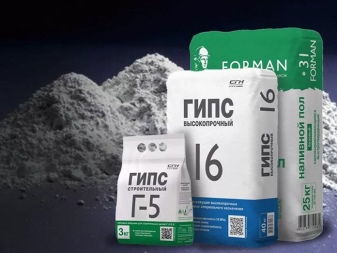
Sprinkling with sawdust
Environmentally friendly protection of potato beds from the Colorado potato beetle is provided by mulching with straw or sawdust. It is best to use birch or pine sawdust, they are poured in between rows and around bushes.
However, the smell of fresh wood shavings scares off the beetle only for a while, so the mulch should be renewed at least 2-3 times before the flowers appear, and after flowering every month.
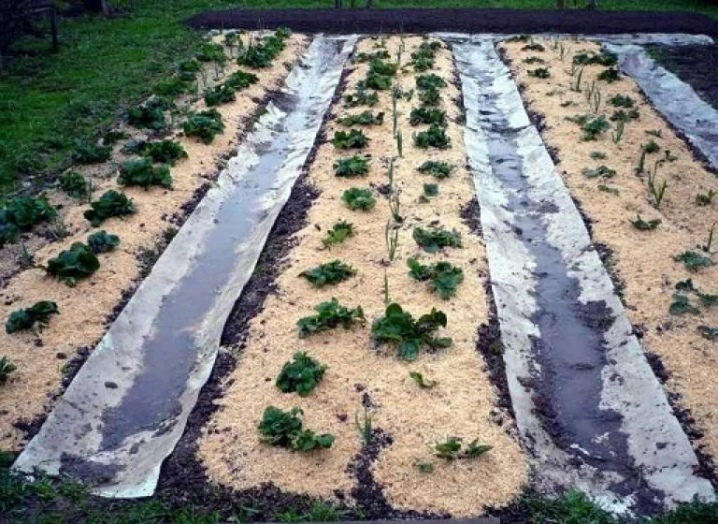
How to get rid of by spraying?
Another effective way to combat Colorado is spraying with various decoctions and infusions. When carrying out processing, you should adhere to the following rules.
- Spraying is desirable in dry weather without wind, best of all in the evening hours.
- The shoots must be dry, as moisture on the leaves can reduce the concentration of the working mood.
- To ensure maximum adhesion of liquids to the surface of sheet plates, a little soapy substance can be added to the solution - it can be special preparations of green soap or ordinary household soap, crushed on a grater.
- For processing potato plantings, only freshly prepared solutions are used, they must be mixed no later than 8-10 hours before use.
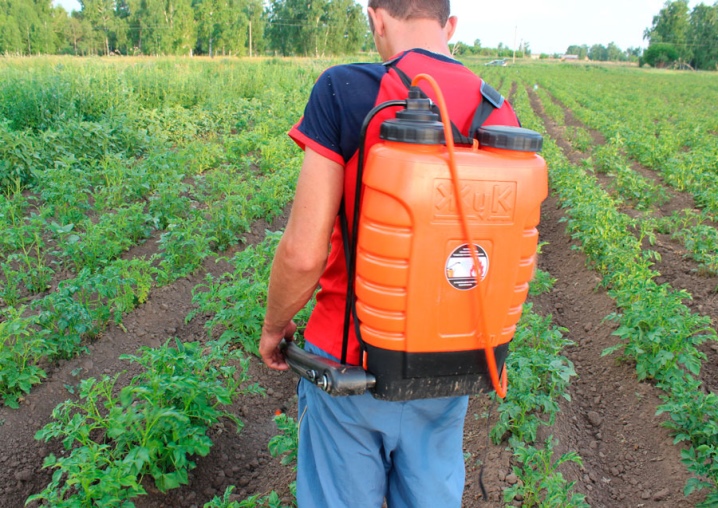
The beetle very quickly adapts to the active components of the solutions, therefore, several different ingredients should be alternated during processing. The following spraying is most effective.
- Walnut. 1 kg of walnut leaves and fruits is mixed with 300 g of eggshell and 1 liter of water is poured. The solution is insisted for a week, then filtered and sprayed, trying to spray on all the green surfaces of the bush.
- Mustard. Dry mustard powder is diluted in water at the rate of 200 g per bucket of liquid, add 100 ml of vinegar and mix thoroughly so that the mustard is completely dissolved. Then the plants damaged by the Colorado potato beetle are filtered and treated.
- Garlic. A working infusion is prepared from 300 g of chopped cloves or cut garlic arrows and poured with a bucket of water. For maximum effectiveness, add 50 g of liquid soap to the solution.
- Celandine. To combat the pest, the celandine herb is crushed and poured with water so that it is 3-5 cm higher than the grass. Boil for 15 minutes, squeeze and filter through cheesecloth. Before using the resulting concentrate, dilute with water at the rate of 500 ml of broth per bucket of water.
- Tobacco. Dried shoots of vegetable tobacco are an effective remedy against the Colorado potato beetle, if it is not at hand, you can take tobacco for cigarettes or makhorka. 500 grams of powder is diluted in 10 liters of water and soaked for a couple of days, then filtered and 50 g of crushed soap is added.
- Poplar. Fragrant poplar leaves are highly effective. Half a bucket of green mass is poured with water and boiled for 15-20 minutes. Then again diluted with water, bringing the volume of the drug to 10 liters. The finished concentrate is infused for 3-4 days and processed.
- Hemp. The Colorado potato beetle hates the smell of hemp. To prepare a solution, 200 g of leaves are poured into 2 liters of water and boiled for 15 minutes. Then they filter, cool and spray the affected plants.
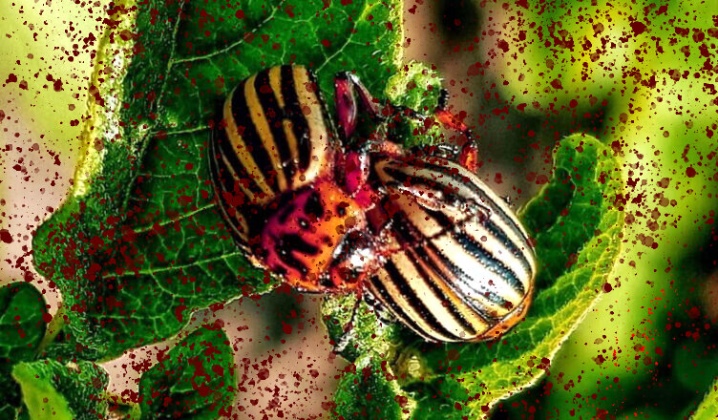
As a basis for protective infusions, you can use greens of bitter wormwood, horsetail, elecampane and dandelions. Of the other components, such are used.
- Tar. Dilute 30 ml of the substance in 1 liter of water and spray. When working with tar, do not use mechanical atomizers, as in this case the atomizer nozzles become clogged and it will be very difficult to clean them. It is enough just to pour the solution into a plastic bottle, make holes on the lid and gently distribute over the surface of the bush. Processing should be carried out at least four times per season, but experienced gardeners advise using a tar shower 2-3 times a week.
- Soda and soap. 200 ml of liquid soap and 50 g of baking soda are diluted in 1 liter of water, mixed and sprayed.
- Soda and yeast. 50 g of fresh or 10 g of dry yeast and 1 glass of baking soda are poured with warm water, infused for 3-4 hours, and then used to process plants.
Solutions of chemical preparations, for example, urea, can help in the fight. 50 g of this product is diluted in a bucket of water, infused for half an hour, and then sprayed over the bushes from a spray bottle.
Surprising, but true: the use of Coca Cola gives a good effect. 2 liters of the drink are diluted in 5 liters of water, mixed and sprayed over potato bushes.
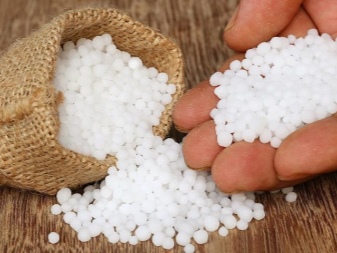

What plants to plant nearby?
Solanaceous pests are sensitive to strong aromas. Therefore, if you plant some crops between two rows of potatoes, then you can count on the fact that their smell will scare off the Colorado potato beetle, and he will settle in another place. For mixed plantings, such crops can be used.
- Marigold. In order for these flowers to scare off the pest, they need to be planted as close to the potatoes as possible. In this case, you should not over-thicken the flower plantings, as this can negatively affect the growth and development of potato fruits.

- Borago. The Colorado potato beetle is afraid of the scent of this flower. For maximum protection, borage and potatoes should be alternated. Such plants not only create effective protection for the garden, but also decorate the plantings with their blue flowering.
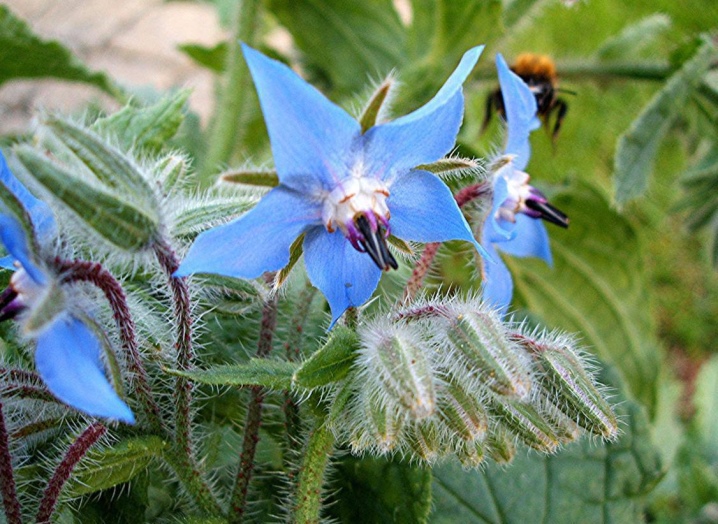
- Calendula. Marigolds will protect the potatoes if they are planted at the same time. It is advisable to plant flowers not only around the garden, but also inside the bushes.

- Coriander. This plant has a specific aroma that keeps pest parasites away from nightshade crops. For the result to be as effective as possible, gardeners are advised to plant flowers between potato bushes in a ratio of 1 to 2.
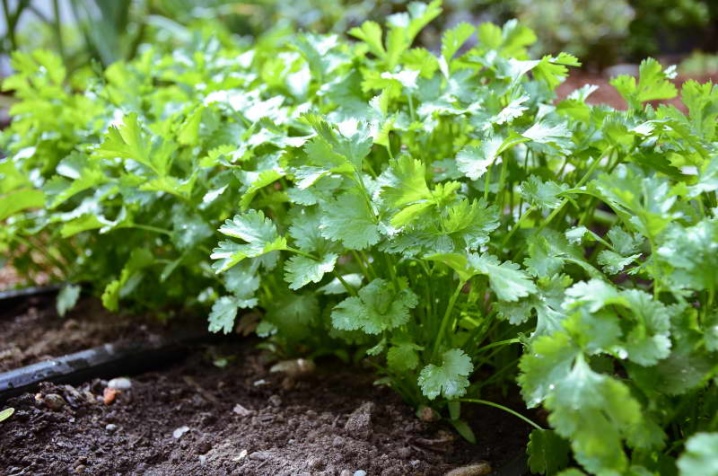
- Mattiola is two-horned. One of the most effective plants with beautiful lilac-pink buds. Its smell has a powerful deterrent effect on parasites, so just one flower is enough for four rows of potatoes.
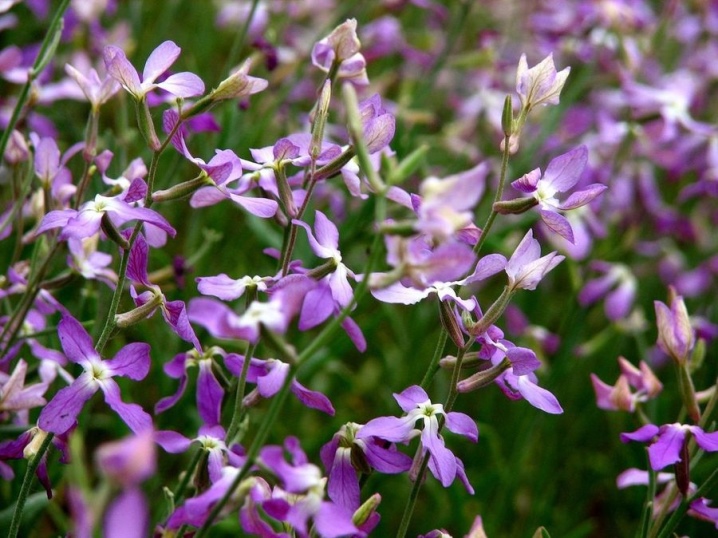
Other plants that can drive the Colorado potato beetle away include spicy herbs (onions and dill), legumes (lentils, peas, beans), and horseradish.
Some gardeners use wormwood to scare off Colorado - if this fragrant crop grows somewhere nearby, you can cut off the shoots and bury them in the aisles of the potatoes. Its bitter smell will effectively fight pest attacks.
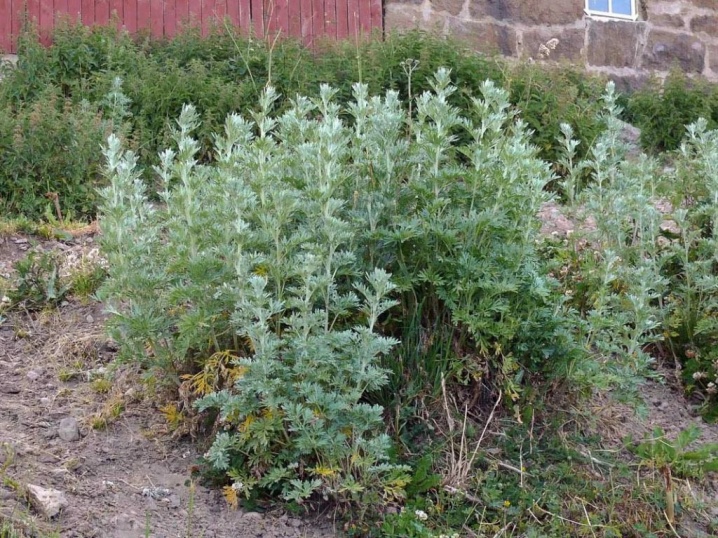
Recommendations
Unfortunately, the fight against the pest most often begins after it has appeared on the site. However, the best way to get rid of the enemy is to prevent it from spreading among your landings. If you cultivated a potato plantation for a whole year and actively fought against the Colorado potato beetle, this does not mean that the pest will not appear again. But there will be much less of it. That is why it is important to follow traditional agricultural practices.
- To prevent the appearance of the Colorado potato beetle, high hilling has proven itself well. It is performed in such a way that the lower leaves of the bush are immediately underground. On them are the larvae and eggs of the Colorado potato beetle, once on the ground, about 60% of them die.
- After harvesting in the autumn, you need to plow the garden well to the depth of a shovel bayonet, it is advisable to use a plow to turn the soil. Then some of the beetles will be on the surface and freeze in winter. It is best to do this just before frost or snow.
- In the initial stages of the appearance of the beetle, manual collection of the pest will be an effective method of control. In this case, adult beetles and their larvae are collected in a plastic bottle or jar. And the leaves on which the eggs are laid are cut off. The more often you do this, the better.
- If possible, try to use natural enemies of the beetle. These include ants, bedbugs, grasshoppers, ladybirds, ground beetles, and lacewings. These insects are able to exterminate some of the pest in the area.
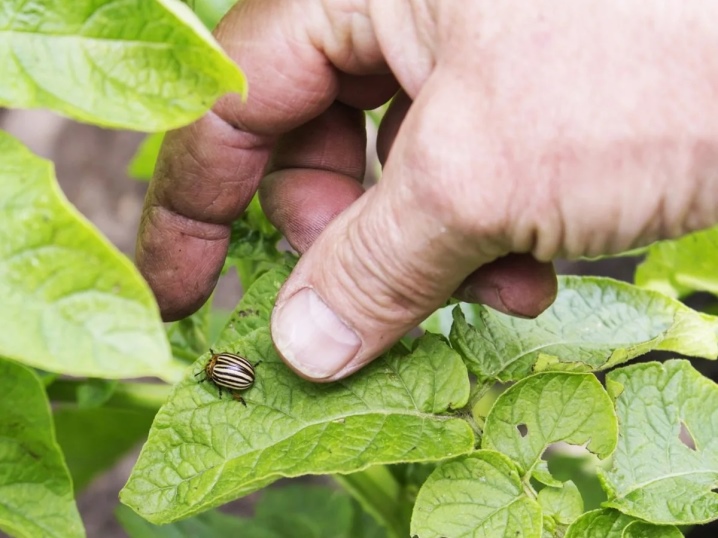
The modern industry offers electronic ways to combat Colorado. Scarers propagate ultrasonic waves. The insect does not tolerate such sounds and leaves for an area where there are no such devices. In the early stages of culture development, the fruits have not yet formed, bioactive substances can be used.
- Fitoferm. This drug is not harmful to humans or pets. Its action is based on the suppression of some life processes in the pest's body. Eating a leaf treated with Fitoverm, the Colorado potato beetle loses its appetite and soon dies of hunger and lack of food.
- "Agravertine". It is highly effective against adults and larvae of the Colorado potato beetle. However, it is ineffective against eggs, therefore, to achieve the maximum effect, two treatments must be carried out at a frequency of two weeks.
- "Bitoxibacillin". This substance can be used throughout the growing season as it does not accumulate in the tubers. When a pest enters the body, it causes toxicosis, and after a few days the pest dies. It takes a week to destroy an entire colony.
- Boverin. The drug is based on fungi. When their spores land on the body of the Colorado potato beetle. They begin to grow inside it - this inevitably leads to the death of the insect.
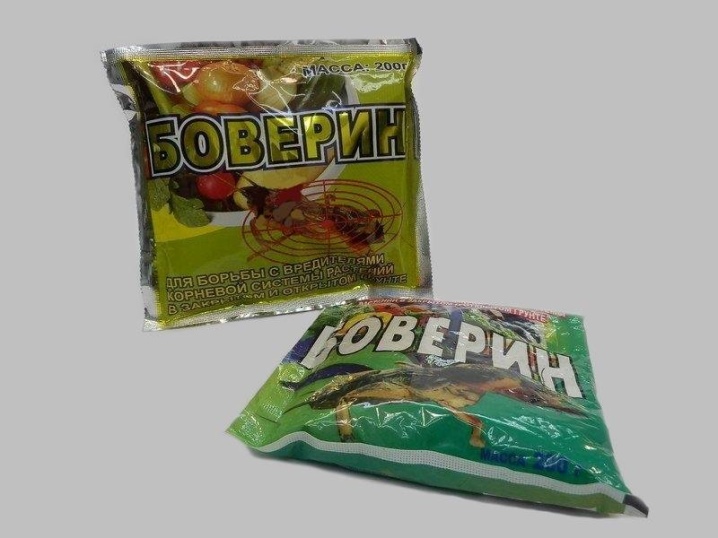
If the scale of the defeat is large, and it is no longer possible to save the crop, it makes sense to use chemical means. In this case, you can create a beetle defense for the next season.
- "Colorado". After the active components of this drug enter the beetle's body, the insect's nerve impulses are blocked. As a result, he loses the ability to move and soon dies from nervous exhaustion.
- "Regent". Fipronil based product. It also acts on the nervous system of the pest and leads to the death of the latter.
- Aktara. This toxin disrupts the parasite's digestive system. Having eaten the leaves, he dies after a day. On potatoes, the drug can last for 4 weeks, after which the treatment must be repeated.
- "Sonnet". The drug contains hexaflumuron poison, it blocks the cover of the larvae and thereby prevents their development. It does not kill adults, but females can no longer lay down viable offspring. Therefore, in the future, the colony will die anyway.
- "Tornado". It is used to process the bushes themselves and the soil around them, allows you to destroy the larvae and eggs hidden in the ground.
- Tanrek. A powerful nerve agent. In a day, such a poison is capable of destroying almost the entire enemy colony. It is absolutely safe for humans, but it can lead to the death of pollinating bees.














The sheer number of different methods and compositions for dealing with the Colorado potato beetle suggests that none of them is reliable. Why not take advantage of the scientific achievements of the 19th century, which still work reliably?
Good day! And what is this means - the achievement of the 19th century, reveal the secret, please, Mr. Bozhenov?))
And I'm very interested to know ...
I remember the time when the Colorado potato beetle appeared, as a teenager I collected it in a matchbox, admired: a beautiful striped one ... And when I saw him eating the leaves, leaving only bylochki, then the struggle with the beetle began. And they did this: dust powder was poured into a nylon stocking, after having tied his nose and mouth with a handkerchief, glasses were put on and sprayed over potato bushes. Yes, the effect was, the beetle was destroyed, but it seemed to me that the potatoes also had the smell of this dust, although no one was hurt by the dust at that time ...
The comment was sent successfully.